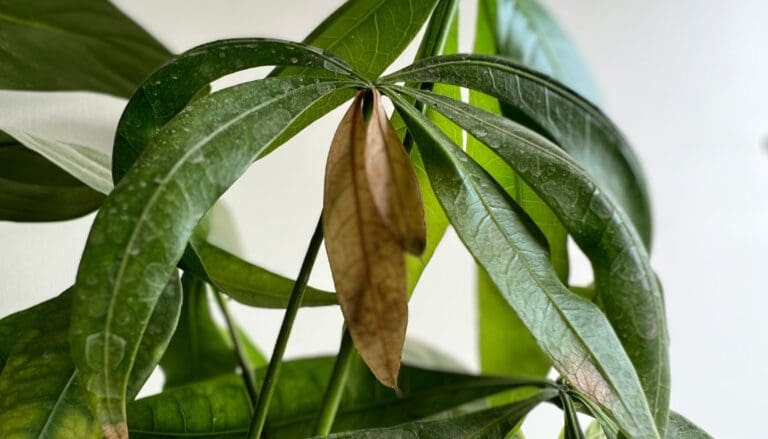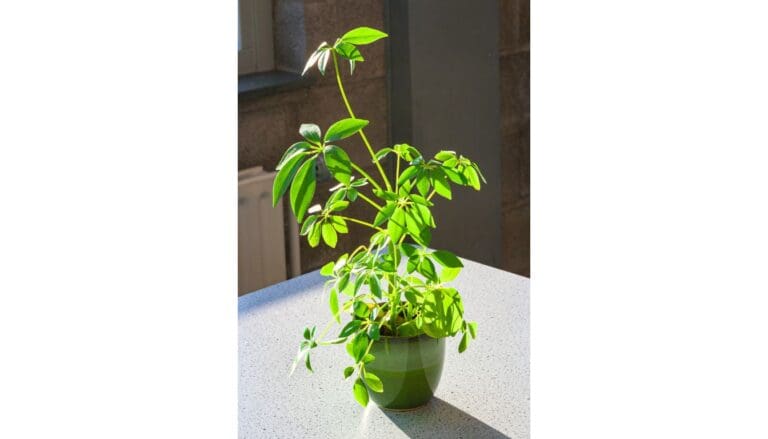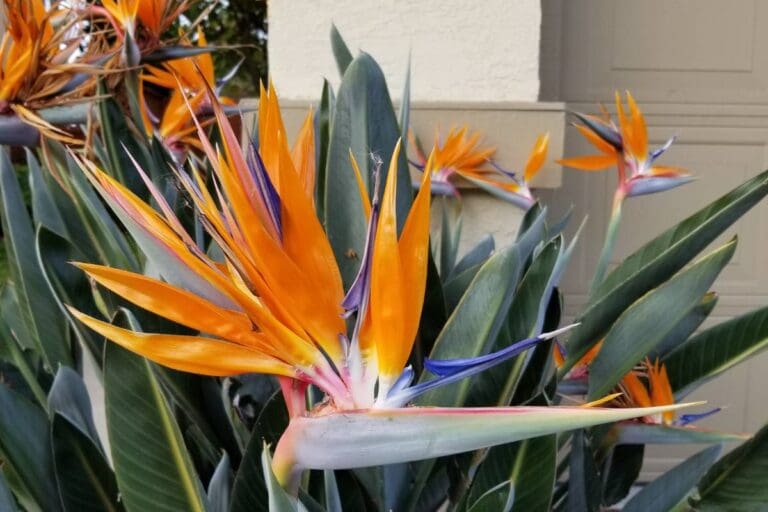How Often Should A Peace Lily Be Watered? (Peace Lily Water Requirements)
Peace Lily is a well-known water-purifying plant that is easy to care for and can survive in different lighting conditions. Like all other plants, water is an essential requirement of your peace lily plant, and without the right amount, it will develop problems such as droopy leaves, brown spots, yellowing leaves, crispy leaves, and stunted growth.
Now the question is how much water does Peace Lily need, and how often should you water them?
As a general rule, watering your peace lily once a week during the growing season would be perfect. However, we don’t recommend that you follow any watering schedule blindly. Instead, check if the soil is dry and then water it accordingly. Avoid watering if the soil is still wet.
Overwatering or underwatering is not uncommon, as understanding the water requirements or the correct watering technique might not be easy for everyone, especially if you are a beginner.
But the good news is, Peace Lily is a forgiving plant, so even if you made a mistake with the watering, you could revive the plant with some basic care.
Let us get started on everything you need to know about watering your Peace Lily so that you can avoid any problems or, if one occurs, fix them.

Please note: Simplify Plants is reader-supported. Some links in the post are affiliate links and I get a commission from purchases made through links in the post.
When to water Peace Lily?
The water requirement of the Peace Lily plant will depend upon the season and the temperature.
Summer
You must water your Peace Lily plant only when the soil dries out. During summer, the soil dries out fast, so it will need frequent watering.
On average, consider watering your Peace Lily once a week, but other factors will also come into play. The temperature, humidity, plant size, pot size will also decide the water requirement.
You can check the soil’s moisture level with a finger, skewer, or moisture meter before watering your Peace Lily.
These plants might tolerate some under watering or overwatering but continuing for an extended period will cause problems and diseases.
Winter
During winter, the Peace Lily needs even less care, as it is the dormant season.
Due to low light conditions, the soil takes a long time to dry, sometimes even a month. So naturally, the plant’s water requirement will go down, and you must never water without checking the soil as you need to be extra careful during this time.
Consider cleaning the leaves with a damp cloth to clean dust, let the plant photosynthetic effectively, maintain moisture, and avoid pests.
How to tell if Peace Lily needs water?
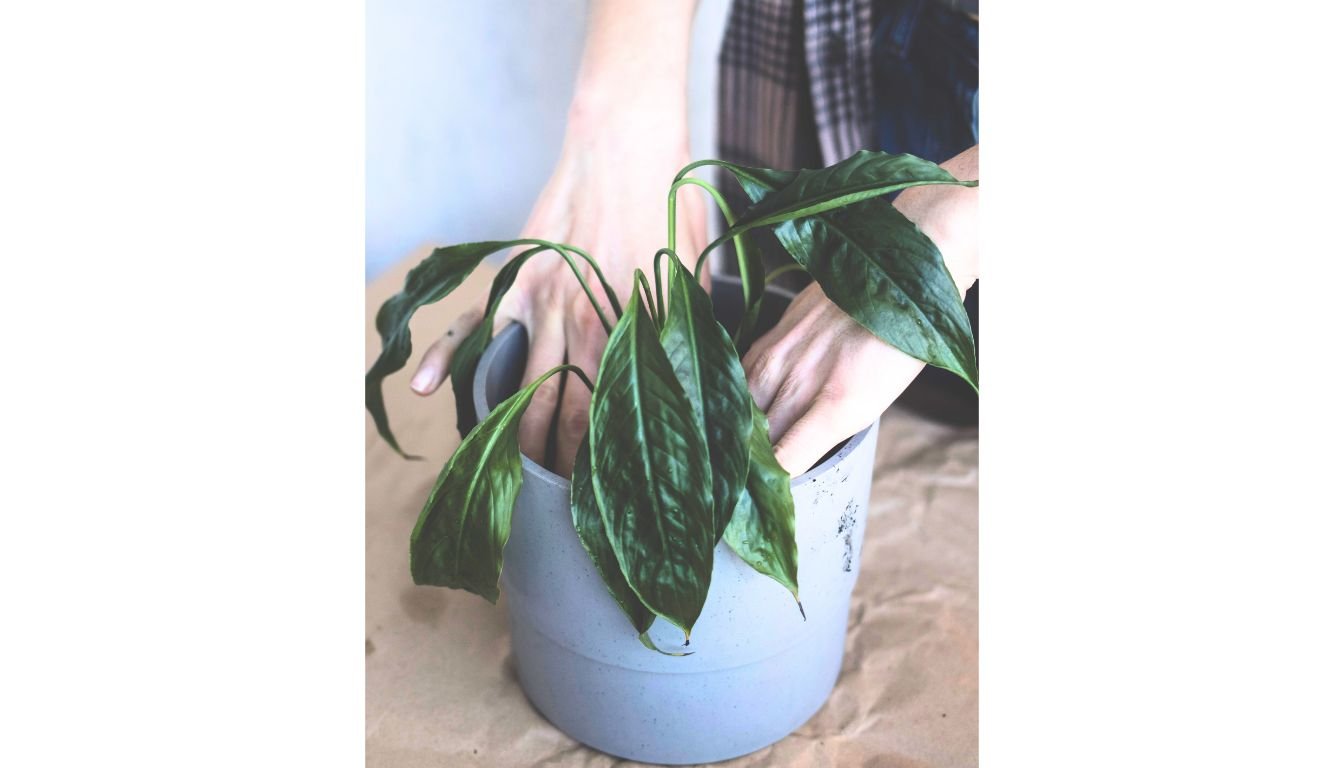
All living beings require water, including your Peace Lily. Without water, there will be weakness and various other issues.
The plants cannot perform their daily functions without sufficient water.
There are different ways for the plants to tell you that they need water. Let us check out what the signs are:
Dry soil
Checking the soil is a great way to find out whether your Peace Lily requires water. If the soil is getting dry, consider watering the plant.
You can get a moisture meter if you’re not sure if you can tell whether the soil is dry or not. Insert it in the soil, and if it shows 2 or 3, you need to water. Don’t forget to water your Peace Lily thoroughly.
Soil pulling away from the edge
Another sign that the soil gives you is by pulling away from the edges of the pot. This happens if your Peace Lily is exposed to too much direct sunlight without getting enough water.
This happens if you follow a routine blindly and do not check the soil. On the other hand, the soil fails to retain enough moisture due to too much light and less watering.
In this case, you can help your Peace Lily by soaking the pot in a water-filled tray for about an hour. After that, let the pot drain the excess water out of the soil.
Brown crisp leaves
Brown and crisp leaves can indicate different problems in your plants, such as too much or direct light, pest infestation, low humidity, and dehydration.
You need to follow the golden rule that you should never water your Peace Lily without checking the soil. Always watch out for pests by checking the leaves of your Peace Lily.
If the soil is devoid of moisture, the foliage will become dry and turn crisp and brown. Therefore, check the soil if you notice brown leaves on your Peace Lily plant.
Brown leaves are never a good sign because they indicate that something is seriously wrong with the Peace Lily and the plant is experiencing unfavorable conditions.
Soak your Peace Lily plant and water it thoroughly every time you water it so that the plant doesn’t get dehydrated. Always water your plant evenly.
Beware of overwatering as that can be very harmful to the Peace Lily. One easy way to know this is if the new leaves have brown spots in them.
Droopy, curling leaves
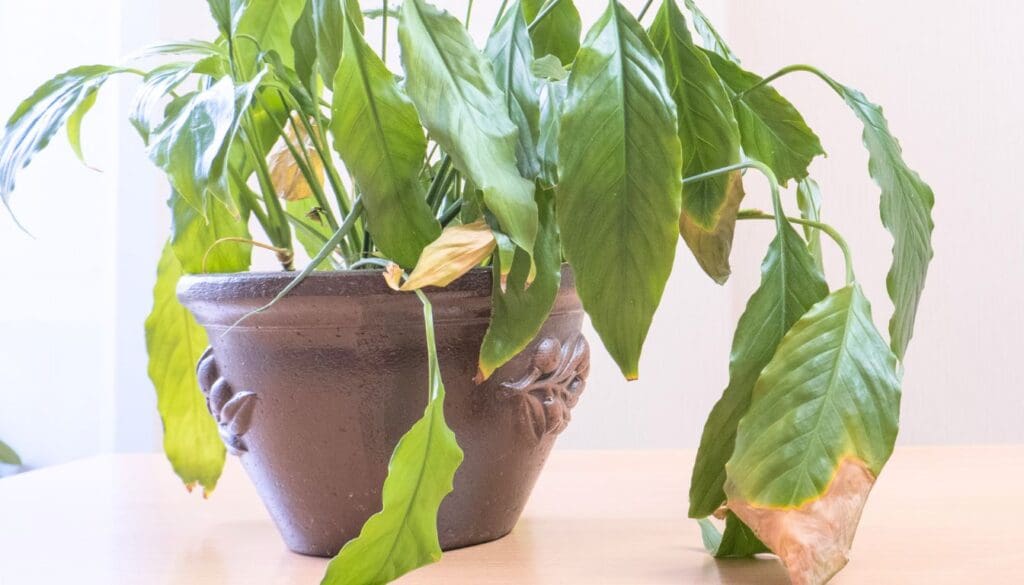
Droopy leaves are a common sign that tells that your Peace Lily would appreciate some water. If the leaves are drooping and curling, it means that the Peace Lily is thirsty, and you’ll need to water it thoroughly.
However, you must not let this happen again. Please don’t wait for your Peace Lily to show curling leaves before you water it again. Instead, you should water the plant before the leaves droop or curl.
If the leaves of your Peace Lily look pale, it means that you need to slow down. First, check the soil’s moistness and then decide on watering. Don’t do this just one time but follow this every time.
How to check the dryness of the soil?

There are different ways of checking the soil’s dryness. Choose whichever suits you the best.
Moisture meter: Insert the moisture meter in the soil, and if it shows two or three on the meter, it is time to water your Peace Lily plant.
Finger/Skewer: Insert your finger or the skewer into the topsoil (2-3 inches). If the soil doesn’t stick to your finger or the skewer, it indicates that the soil is dry and needs some water.
Wet pot: If you have your Peace Lily in a Terracotta pot, you can check the bottom of the pot to understand if the soil is dry or moist. You can either touch the pot or check the shade at the bottom. If the bottom of the pot is dark, you must wait as the soil is still moist.
Lifting the pot: The weight of the pot is a good indicator that can tell if the soil is dry or wet. If the pot is heavy, it means the soil is wet. If the pot is comparatively light, it means the plant needs water.
How often do peace lilies need to be watered?

Water your Peace Lily once a week with a generous amount of water. Thorough watering is the key to a happy and hydrated Peace Lily plant.
However, some factors come into play and can determine the water requirement of the plant.
Understanding these will help you understand your plant better, and you will be able to regulate the watering as and when required.
Factors affecting the need for water
Different factors can affect the water requirement of the Peace Lily plant. Let us understand them.
Pot type
Peace Lily doesn’t prefer overwatering but can withstand underwatering for a while. It would help to give time to dry out between the watering sessions.
People often fail to understand the importance of the pot, but that is an essential factor that should be considered when watering the plant.
Here’s how.
Your plant will need more water if the pot is made of terracotta, wood, or concrete, as these materials absorb moisture from the soil much faster and allow good air circulation in the soil.
Your plant will need medium water if you are using glazing pots, i.e., pots made of ceramic, metal, or glass. These will retain water longer inside them, so you will need to water less frequently.
Your plant will require less water if you are using plastic pots. You can use a plastic pot if you forget to water your plant often.
Soil
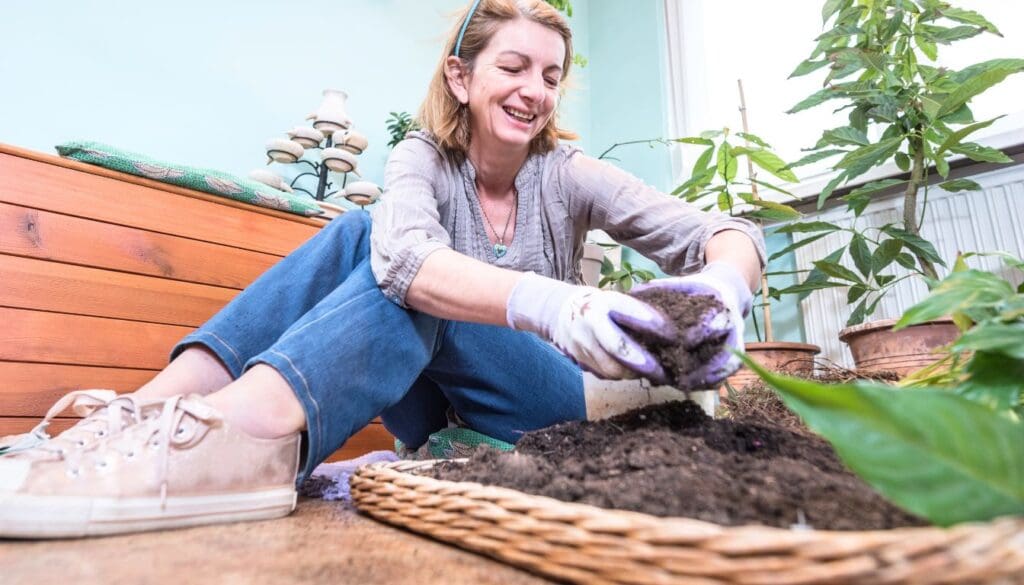
Well-draining soil is required to keep Peace Lily happy. This implies for most houseplants who do not want to live in soggy soil.
We must remember the importance of a pot with drainage holes as that helps the soil drain the excess water.
So, if you are using a well-draining soil mix for your Peace Lily, it will need a regular water supply as the soil will drain out excess water fast.
But, if the potting soil is heavy, you will need to reduce the watering frequency. Otherwise, the plant will get overwatered.
You can create the ideal soil mix for your Peace Lily by mixing
Temperature
Peace lily will thrive if provided with the ideal temperature level between 68 and 85°F.
These tropical plants enjoy warm conditions, and if they are provided with the right temperature, they will require more water. If you don’t give it enough water, the leaves will droop.
However, if the temperatures remain below the required level, do not water as much. Reduce the watering with the decrease in the temperature.
Season
During summer, your Peace Lily plant will get more light and higher temperature levels. So, naturally, the plant will require more water.
Summer and spring are the growing seasons that will help your plant grow most if you water it correctly, that is, as soon as the soil dries out.
The Peace Lily receives less light and low-temperature levels during winter, indicating that you need to lower the water supply.
Humidity
Peace Lily plant loves humidity. Since it is a tropical plant, its humidity requirements are on the higher side.
If the humidity level is high, your Peace Lily will require water less often. This is because the plant is getting enough moisture.
However, this might not affect the water requirement too much.
If the humidity level is low, water the plant frequently. Consider misting to increase the humidity for your Peace Lily.
However, don’t depend on humidity to water your plant. Follow a watering routine irrespective of the humidity. Check the soil to understand the water requirement.
Light
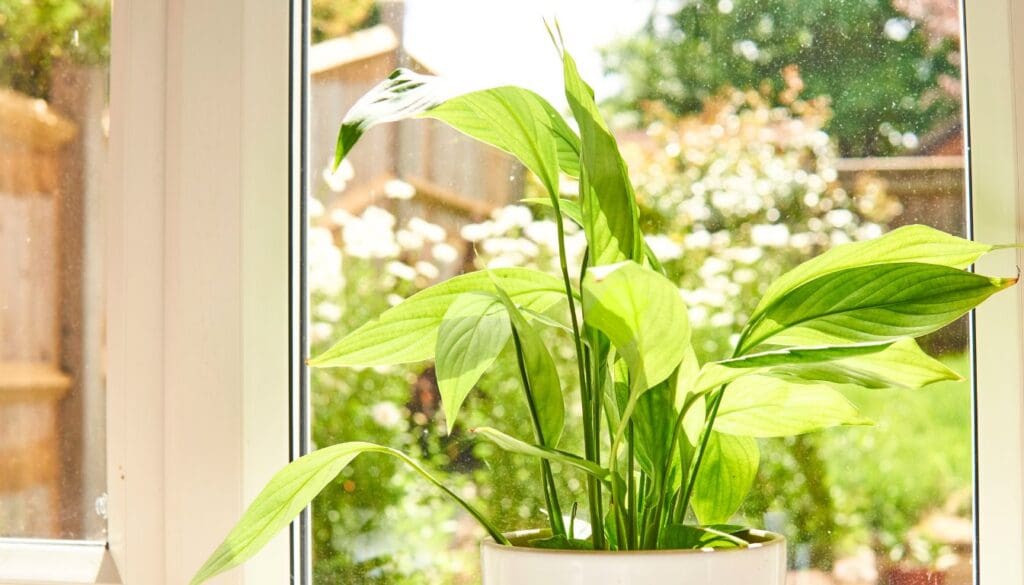
If your Peace Lily is getting a lot of bright and indirect light, it will require more water. This is because the light will help the soil to dry faster.
Better lighting conditions will stimulate more growth and allow the plant to produce more energy. It will automatically increase the water intake of the plant.
On the other hand, if the Peace Lily is placed in a low light area, its growth will slow down. Hence, it will require less water.
Also read: What Kind Of Light Does A Peace Lily Need? (Peace Lily Light Requirements)
Size of pot
The size of the pot can also determine the water requirement. If the Peace Lily is placed in a large pot, it will require less water.
A larger pot will contain more soil. More soil will hold more water. Therefore, the soil will take time to dry out, so the Peace Lily will require less water.
If the pot is smaller or compact, it will require frequent watering. There will be less soil in such pots, and they will hold less water.
The soil will, therefore, dry out faster, and the plant will call for water.
However, be careful while watering as you don’t want to overwater your Peace Lily. Always examine the soil before you water it.
How much water does a Peace Lily need?
Peace Lily will require thorough watering to reach the deepest roots, and the excess water runs out of the drainage holes.
Water your Peace Lily in a way that the soil doesn’t remain soggy. Ensure that the drainage holes are serving the purpose and draining out water after you water the plant.
You can take your Peace Lily to the sink and water it thoroughly, and let the water drain out from the drainage holes. Never let the plant sit on the water.
Try not to water the leaves while watering. You can try the bottom-watering method instead.
Signs of overwatering Peace Lily

If you are overwatering your Peace Lily plant, it will show you these signs:
- Brown tips
- Brown spots
- Yellow leaves
- Stinky soil
- Mold on top of the soil
- Mushy stems
Signs of underwatering Peace Lily
If you have an underwatered Peace Lily, you will notice the following signs:
- Dry brown spots
- Yellow spots
- Droopy leaves
- Stunted growth
- Brown leaves
- Wrinkled and crispy leaves
- Soil pulling from the edges
How often do I mist my peace lily?
Misting helps provide humidity to the plants, and since the Peace Lily is a humidity-loving plant, it will appreciate some misting.
You can mist your Peace Lily if you feel that it is not getting enough water. You can mist it many times in a week.
However, there are other ways of maintaining the humidity levels suited for your Peace Lily, and these are:
- Install a humidifier
- Use a pebble tray
- Group your Peace Lily with other moisture-loving plants
- Keep the plant near an aquarium
- Relocate the Peace Lily to the bathroom or kitchen
Ref: ScienceDirect, NCBI, University of Vermont, Nationalgeographic, NC state university, University of Florida, The University of Arkansas, Queensland Government.
Recommended Garden Supplies
| Product Image | Our Recommended Gardening Supplies | Check Offers! |
|---|---|---|
Top Top
Top
Top
Top
Top
Top
Top
Top | rePotme Houseplant and Tropical Classic Potting Soil Mix | Check Offer On Amazon |
 Top
Top
Top
Top
Top
Top
Top
Top | Espoma Organic Indoor Plant Food | Check Offer On Amazon |
 Top
Top
Top
Top
Top
Top
Top
Top | GooingTop LED Grow Light 6000K Full Spectrum Clip Plant Growing Lamp | Check Offer On Amazon |
 Top
Top
Top
Top
Top
Top
Top
Top | Soil Moisture Meter | Check Offer On Amazon |
 Top
Top
Top
Top
Top
Top
Top
Top | Govee Hygrometer Thermometer, Bluetooth Enabled! | Check Offer On Amazon |
 Top
Top | LEVOIT Humidifiers for Large Room(Best For Plants) | Check Offer On Amazon |
 Top
Top
Top
Top
Top
Top
Top
Top | Upgraded DIY Automatic Drip Irrigation Kit, 15 Potted Houseplants Support | Check Offer On Amazon |
 Top
Top
Top
Top
Top
Top
Top
Top | Stainless Steel Heavy Duty Gardening Tool Set | Check Offer On Amazon |
 Top
Top
Top
Top
Top
Top
Top
Top | Bonide Insecticidal Soap | Check Offer On Amazon |
 Top
Top
Top
Top
Top
Top
Top
Top | Bonide 32 oz Spray Neem Oil for Organic Gardening | Check Offer On Amazon |
 Top
Top
Top
Top
Top
Top
Top
Top | Garden Safe Fungicide | Check Offer On Amazon |




